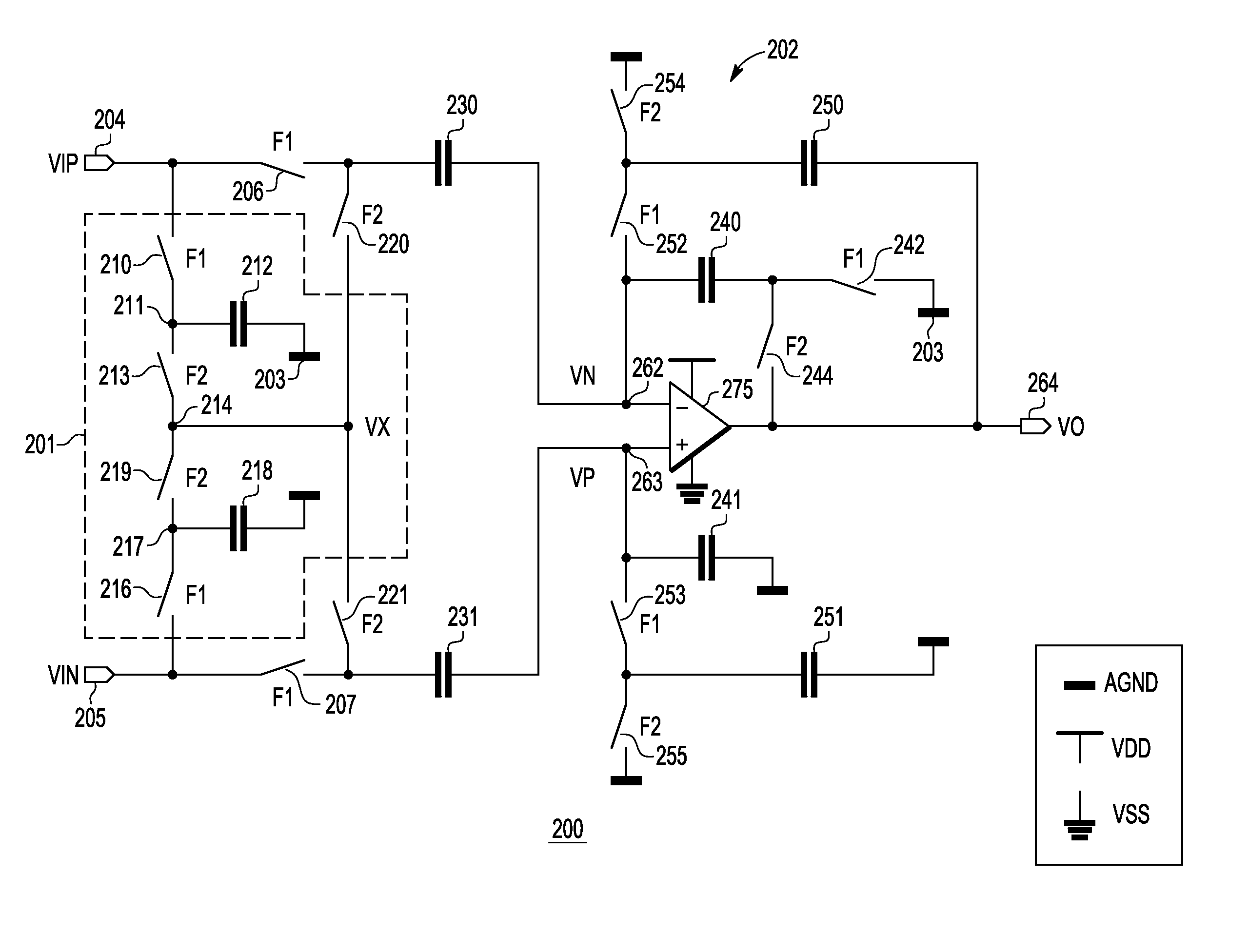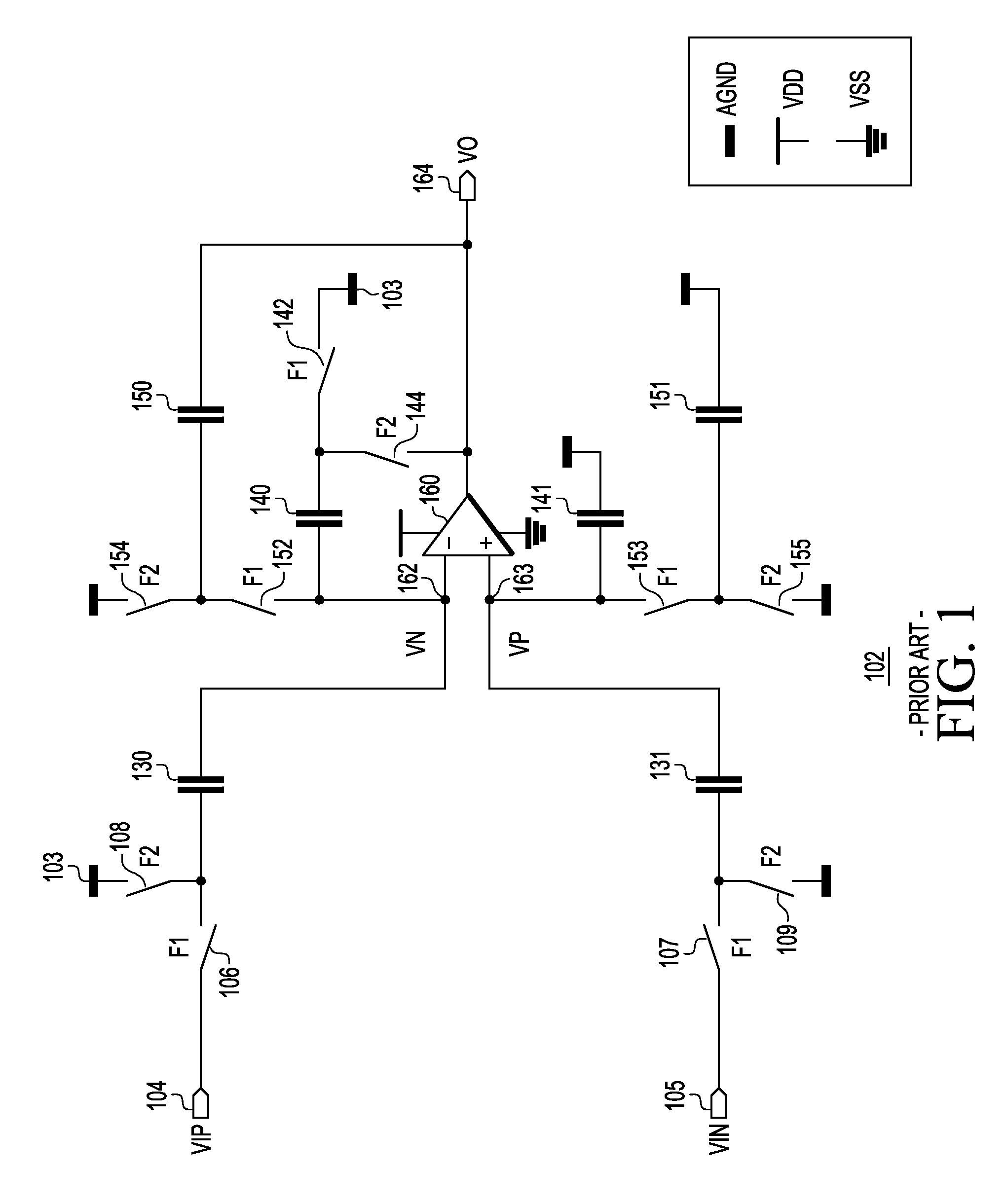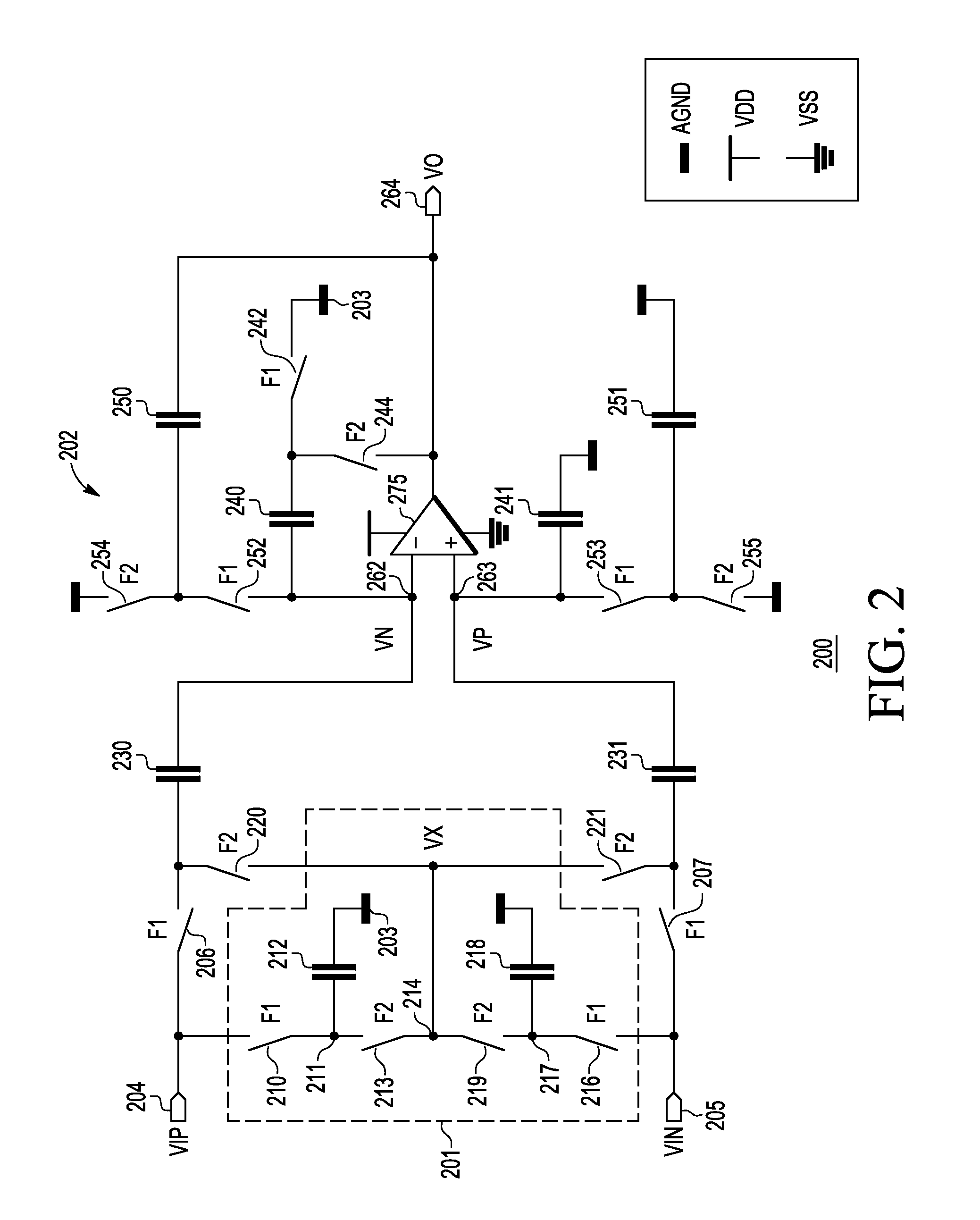Switched-capacitor amplifier circuit
a technology of switching capacitors and amplifier circuits, which is applied in the direction of dc-amplifiers with dc-coupled stages, differential amplifiers, and amplifiers with semiconductor devices/discharge tubes. it can solve the problems of disadvantageous output error of known cds amplifiers in the range of one-half of lsb
- Summary
- Abstract
- Description
- Claims
- Application Information
AI Technical Summary
Problems solved by technology
Method used
Image
Examples
Embodiment Construction
[0020]A switched-capacitor amplifier that lacks a rail-to-rail OpAmp (and uses instead a non-rail-to-rail OpAmp) needs a rail-to-rail input circuit so that the switched-capacitor amplifier can properly amplify an input signal that has a common-mode voltage near either rail of a power supply. FIG. 2 is a schematic diagram of a switched-capacitor amplifier circuit (hereinafter “amplifier circuit”) 200 in accordance with the invention. The amplifier circuit 200 includes a switched-capacitor, rail-to-rail input circuit (hereinafter “input network”) 201 and a switched-capacitor amplifier (hereinafter “switched-capacitor amplifier”) 202. In one embodiment, the switched-capacitor amplifier 202 uses a correlated double-sampling (CDS) technique.
[0021]The switched-capacitor amplifier 202 comprises a first sampling switch 206 with one terminal connected to a VIP input terminal 204 and another terminal connected to a first sampling capacitor 230, and a second sampling switch 207 with one termin...
PUM
 Login to View More
Login to View More Abstract
Description
Claims
Application Information
 Login to View More
Login to View More - R&D
- Intellectual Property
- Life Sciences
- Materials
- Tech Scout
- Unparalleled Data Quality
- Higher Quality Content
- 60% Fewer Hallucinations
Browse by: Latest US Patents, China's latest patents, Technical Efficacy Thesaurus, Application Domain, Technology Topic, Popular Technical Reports.
© 2025 PatSnap. All rights reserved.Legal|Privacy policy|Modern Slavery Act Transparency Statement|Sitemap|About US| Contact US: help@patsnap.com



